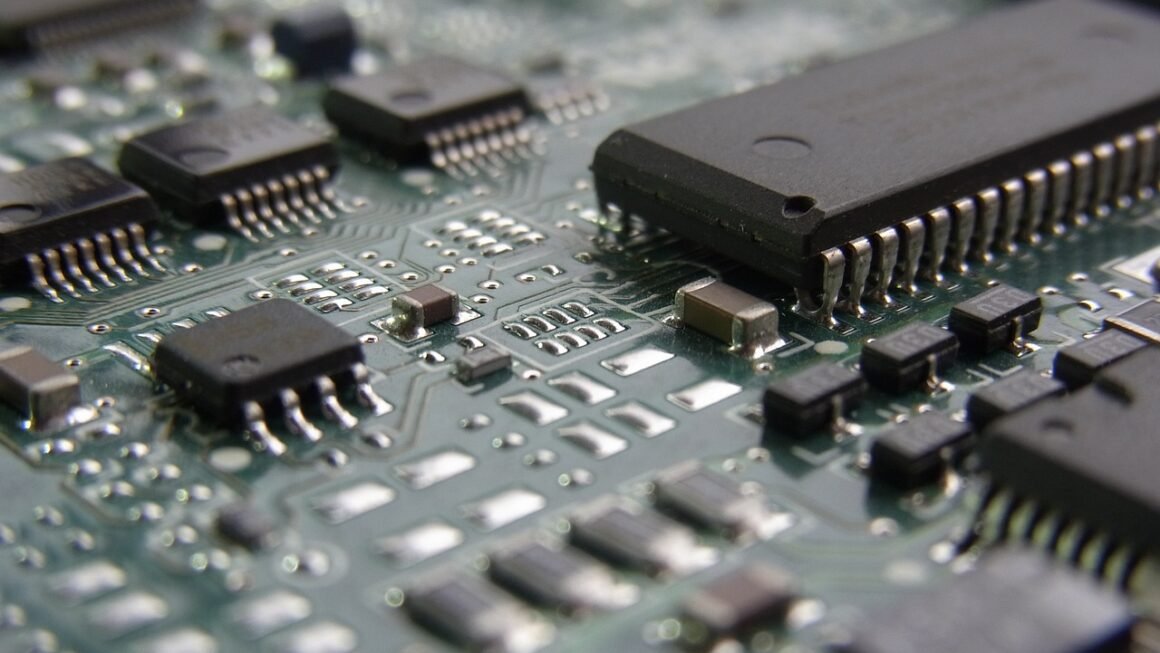Wearable technology has moved beyond simple fitness trackers to become an integral part of our lives, impacting health, communication, and entertainment. From smartwatches that monitor vital signs to augmented reality glasses that overlay digital information onto our view of the world, wearable devices are constantly evolving. This blog post delves into the world of wearable tech, exploring its various applications, benefits, and potential future developments.
The Expanding World of Wearable Technology
Wearable technology encompasses a broad range of electronic devices that can be worn on the body. These devices are designed to be convenient, accessible, and integrated into our daily routines.
Types of Wearable Devices
- Smartwatches: These are arguably the most popular type of wearable, offering features like notifications, fitness tracking, and even mobile payments. Examples include the Apple Watch, Samsung Galaxy Watch, and Fitbit Versa series.
- Fitness Trackers: Dedicated to monitoring physical activity, these devices track steps, heart rate, sleep patterns, and more. Examples include Fitbit trackers, Garmin devices, and Xiaomi Mi Bands.
- Smart Glasses: These glasses overlay digital information onto the user’s view of the real world. They are used in various applications, including manufacturing, healthcare, and gaming. Examples include Google Glass Enterprise Edition and Vuzix Blade.
- Head-Mounted Displays (HMDs): Primarily used for virtual reality (VR) and augmented reality (AR) experiences, these devices immerse the user in a digital environment. Examples include Oculus Rift, HTC Vive, and Microsoft HoloLens.
- Wearable Cameras: These compact cameras can be attached to clothing or worn on the body to capture photos and videos hands-free. Examples include GoPro cameras and other action cameras.
- Smart Clothing: Clothing embedded with sensors that can track various metrics like body temperature, heart rate, and muscle activity. Examples include Athos smart clothing and Hexoskin.
Market Growth and Statistics
The wearable technology market is experiencing significant growth. According to Statista, the global wearable devices market is projected to reach $148.41 billion in 2024. This growth is driven by factors such as increasing health consciousness, technological advancements, and the rising adoption of smart devices. This expansion presents enormous opportunities for innovation and development across the industry.
Health and Wellness Applications
One of the most significant impacts of wearable technology is in the realm of health and wellness. These devices provide valuable data that can help individuals monitor their health, improve their fitness, and even detect potential medical issues.
Monitoring Vital Signs
- Heart Rate Monitoring: Wearables can continuously track heart rate, providing insights into cardiovascular health and fitness levels. For instance, irregular heartbeats can be detected, alerting users to potential issues like atrial fibrillation.
- Sleep Tracking: These devices monitor sleep patterns, providing data on sleep duration, sleep stages (e.g., deep sleep, REM sleep), and sleep quality. This information can help users identify factors affecting their sleep and make necessary adjustments.
- Blood Oxygen Saturation (SpO2): Some wearables can measure blood oxygen saturation levels, which is particularly useful for individuals with respiratory conditions or those who want to monitor their fitness levels at high altitudes.
- Stress Monitoring: Some wearables use heart rate variability (HRV) and other metrics to estimate stress levels. They can provide alerts and suggestions for relaxation techniques when stress levels are high.
- ECG Monitoring: Advanced smartwatches, like the Apple Watch and Samsung Galaxy Watch, offer electrocardiogram (ECG) functionality, enabling users to detect potential heart rhythm abnormalities.
Fitness and Activity Tracking
- Step Counting: The most basic function of many wearables, step counting encourages users to be more active throughout the day.
- Calorie Tracking: Wearables can estimate calorie expenditure based on activity levels, helping users manage their weight and diet.
- Workout Tracking: These devices can track various types of workouts, including running, cycling, swimming, and strength training, providing data on distance, speed, heart rate, and more.
- GPS Tracking: Wearables with GPS can track outdoor activities, providing accurate data on routes, pace, and elevation.
Examples and Actionable Takeaways
- Practical Example: A person with a history of heart problems can use a smartwatch with ECG monitoring to regularly check their heart rhythm and share the data with their doctor.
- Actionable Takeaway: Utilize sleep tracking data to identify factors affecting your sleep quality. Experiment with adjusting your bedtime routine, reducing screen time before bed, or optimizing your sleep environment.
Communication and Connectivity
Beyond health and wellness, wearable technology enhances communication and connectivity, keeping users connected to information and their social networks.
Notifications and Alerts
- Smartwatch Notifications: Smartwatches can display notifications from smartphones, including calls, texts, emails, and social media updates. This allows users to stay informed without constantly checking their phones.
- Customizable Alerts: Users can customize which notifications they receive on their wearables, filtering out unimportant alerts and focusing on what matters most.
- Hands-Free Communication: Some wearables offer hands-free calling and voice assistant integration, allowing users to make calls, send messages, and control their devices using voice commands.
Mobile Payments and Digital Access
- Contactless Payments: Many smartwatches and fitness trackers support mobile payment systems like Apple Pay, Google Pay, and Samsung Pay, allowing users to make purchases with a simple tap.
- Digital Keys and Access Cards: Some wearables can be used as digital keys to unlock doors, access buildings, and start vehicles.
Examples and Actionable Takeaways
- Practical Example: A busy professional can use a smartwatch to quickly check emails and respond to urgent messages without having to constantly pull out their phone during meetings.
- Actionable Takeaway: Set up customized notifications on your smartwatch to filter out irrelevant alerts and focus on important messages and reminders.
Entertainment and Gaming
Wearable technology is also making its mark in the entertainment and gaming industries, offering immersive and interactive experiences.
Virtual and Augmented Reality Gaming
- Immersive Gaming: Head-mounted displays (HMDs) like the Oculus Rift and HTC Vive provide immersive virtual reality gaming experiences, transporting users to virtual worlds.
- Augmented Reality Gaming: Smart glasses like Microsoft HoloLens overlay digital game elements onto the real world, creating augmented reality gaming experiences.
- Motion Tracking: Wearable sensors can track body movements and translate them into in-game actions, enhancing the realism and interactivity of games.
Music and Media Playback
- Wireless Headphones: Wireless earbuds and headphones provide high-quality audio playback without the need for wires, allowing users to enjoy music, podcasts, and audiobooks on the go.
- Smartwatch Music Control: Smartwatches can control music playback on smartphones, allowing users to skip tracks, adjust volume, and browse playlists.
Examples and Actionable Takeaways
- Practical Example: A gamer can use a VR headset and motion tracking sensors to experience an immersive first-person shooter game, feeling like they are actually inside the game world.
- Actionable Takeaway: Explore different VR and AR gaming experiences to discover new ways to interact with digital content and enhance your entertainment.
Challenges and Future Trends
While wearable technology offers numerous benefits, it also faces certain challenges. Addressing these challenges and anticipating future trends is crucial for the continued growth and adoption of wearable devices.
Data Privacy and Security
- Data Collection Concerns: Wearable devices collect vast amounts of personal data, raising concerns about data privacy and security.
- Encryption and Security Measures: Manufacturers need to implement robust encryption and security measures to protect user data from unauthorized access.
- Transparency and User Control: Users should have greater control over their data and be informed about how it is being used.
Battery Life and Power Efficiency
- Limited Battery Life: One of the biggest challenges for wearable devices is limited battery life.
- Power Optimization: Manufacturers are constantly working on improving power efficiency to extend battery life.
- Wireless Charging: Wireless charging technologies are becoming more common, making it easier to keep wearable devices charged.
Future Trends
- Advancements in Sensor Technology: More advanced sensors will enable wearables to track a wider range of health metrics and provide more accurate data.
- Integration with AI and Machine Learning: AI and machine learning will be used to personalize wearable experiences and provide more insightful recommendations.
- Miniaturization and Increased Functionality: Wearable devices will become smaller, more discreet, and packed with more features.
- Seamless Integration with the Internet of Things (IoT): Wearables will seamlessly integrate with other IoT devices, creating a more connected and automated environment.
- Augmented Reality (AR) Applications Expanding: AR will become more prevalent, with applications ranging from navigation and gaming to education and healthcare.
- Personalized Medicine: Wearable devices will play a crucial role in personalized medicine, providing real-time data to healthcare providers and enabling more targeted treatments.
Conclusion
Wearable technology has come a long way, evolving from simple fitness trackers to sophisticated devices that impact various aspects of our lives. From monitoring our health and enhancing communication to providing immersive entertainment experiences, wearable devices offer numerous benefits. While challenges related to data privacy, battery life, and user experience need to be addressed, the future of wearable technology is bright. As technology continues to advance, we can expect to see even more innovative and integrated wearable devices that seamlessly blend into our daily routines, empowering us to live healthier, more connected, and more productive lives.



